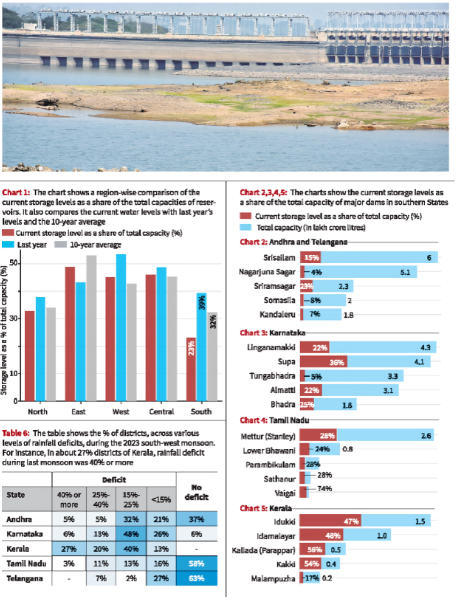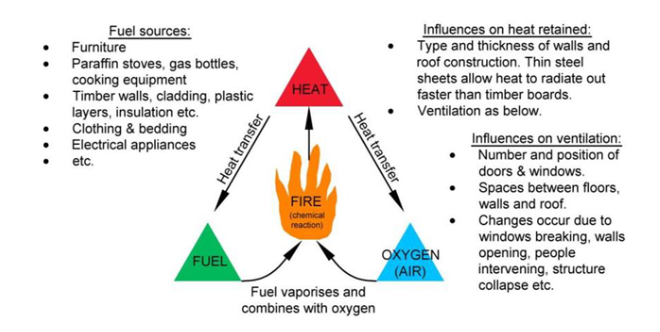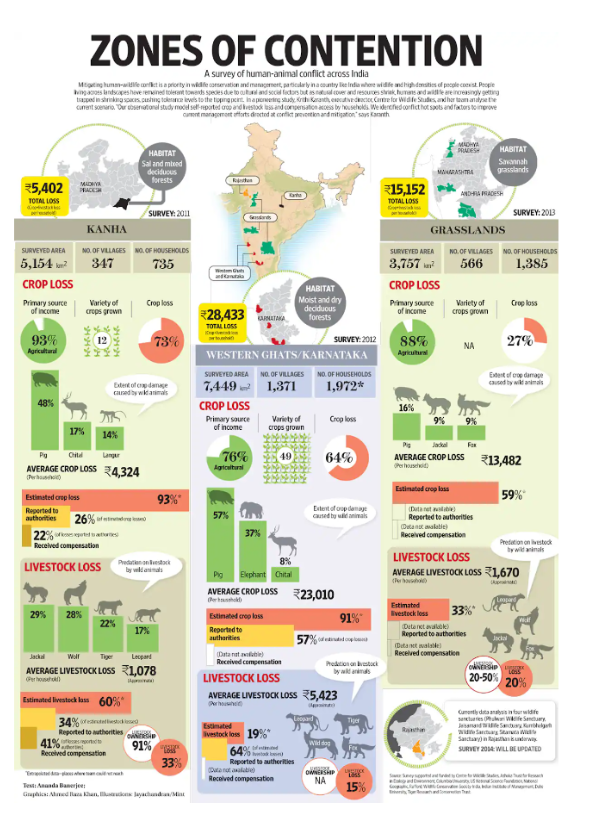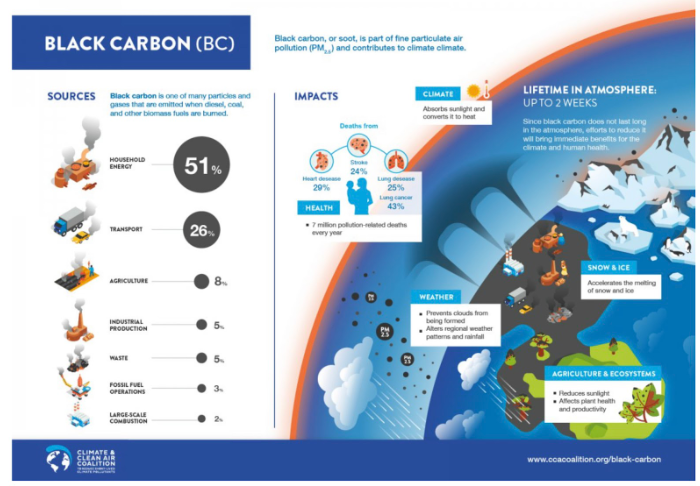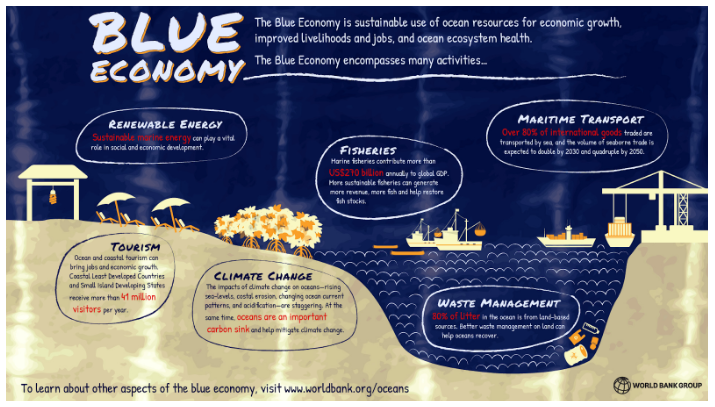10 Apr to 24 Apr, 2024
DOUBLE INCOME NO KIDS
Why in news: Double-Income-No-Kids – problem is a worldwide phenomenon; and it has serious economic and societal ramifications.
About :
Dual income, no kids" (DINK) is a slang phrase for a household in which there are two people earning incomes and no children. Couples living in a DINK household frequently have more disposable income because they do not have the added expenses that come with children. They also often spend less per person on housing than singles because of their ability to share kitchens, bathrooms, and living rooms.
Factors Driving this Trend
- Economic Considerations: The rising cost of living and economic instability discourage childbearing. Eg. Cities like San Francisco, London, Mumbai and Sydney, are known for high real estate prices coupled with high living costs. According to a 2019 survey by CNBC, 64% of millennials report that they have regrets about buying their current homes, primarily because of the hidden costs associated with mortgages and maintenance that could have been mitigated in child-free scenarios.
- Career Prioritization: Study by Pew Research Center highlights that childlessness among women at the end of their childbearing years who hold a Ph.D. is about 30%, which is significantly higher compared to the general population.
- Lifestyle Preferences: Child-free couples often engage in extensive travel, cultural activities, and social events that might be restrictive with children. The growing trend of "experience economy" where experiences are valued over possessions resonates strongly with DINK households.
- Environmental Concerns : Some couples choose not to have children as a personal response to global overpopulation, climate change, and sustainability concerns. In a 2018 survey by the Morning Consult for The New York Times, one of the reasons 33% of surveyed individuals opted out of parenthood was because of climate change.
- Social and Cultural Shifts : Cultural icons and public figures openly embracing child-free lifestyles can validate this choice for others.Celebrities like Oprah Winfrey and Ellen DeGeneres, who have spoken publicly about choosing not to have children, illustrate how societal norms are evolving.
Types of DINKs
There are several situations that can be considered "dual-income, no kids."
- Couples Who Choose Not to Have Children
- Couples Who Cannot Have Children ( Including Gay Couples )
- New Couples: New couples living together may have children one day, but until then they can enjoy a "dual income, no kids" situation.
- Empty Nesters : After the children have grown up and moved out, couples may become part of the dual income, no kids demographic again.
Traps in which DINK couples are falling in
- Overspending: Typically, a household with children or other dependants is able to save 20-30%. Couples with no kids have the potential to save way more than they spend, but often they save about 10-15% of their income. This over-indulgence is largely because couples with fewer financial responsibilities can afford to spend more.
- Wrong investments: Sometimes dink families may have more exposure to real estate than what they require. You must own the house you live in; a second investment in real estate is not recommended. Real estate is not liquid and you end up spending money to maintain it. You also need to think about why you need so many houses or plots. Instead, the funds should be put away in financial investments so that money is readily available to be used.
- Lack of a long-term vision: People in general don’t have the ability to think too much into the future. Children are the driving force that gets people to think and plan for the future. “Most dink couples tend to live in the present. When we look at their lifestyle needs post-retirement we see a huge gap, because most in their working years focus on a lavish lifestyle without saving enough to make sure they are able to sustain it during retirement too.
- Emergency funds: In the short term, the most important goal to achieve is to create an emergency fund. You may not have any financial dependants, but a job loss may set you back financially.

Consequences
- Economic Growth and Consumer Spending: DINK households contribute positively to economic growth through higher consumer spending and investment.A 2021 report from the U.S. Bureau of Labor Statistics highlighted that child-free households spend approximately 25% more on discretionary expenses compared to households with children.
- Labor Market and Workplace Dynamics: Without parental responsibilities, individuals in DINK households may pursue further education, accept jobs with irregular hours, or take on high-travel roles, which can lead to faster career advancement and higher earnings. According to LinkedIn's 2020 Workforce Report, child-free professionals are overrepresented in leadership positions and high-skill sectors like technology and finance, where time flexibility and commitment are highly valued.
- Urbanization and Housing Markets: DINK households are a key market for luxury condominiums and urban renewal projects, preferring amenities-rich environments close to cultural, gastronomic, and entertainment options.Real estate analysis indicates that properties in urban centers with amenities like gyms, communal spaces, and proximity to nightlife tend to attract more DINK buyers, pushing up property values and rents.
- Social and Cultural Impacts: Communities with higher numbers of DINK couples may see a shift in local politics, community planning, and social activities that traditionally revolve around families with children.
- Demographic Shifts and Aging Population: As birth rates decline due to more couples choosing not to have children, countries like Japan and Germany face challenges such as labor shortages, increasing dependency ratios, and pressures on pensions and healthcare systems designed for younger populations.
Strategies to mitigate the trend of rising DINK couples
- Incentivize Parenthood: France has successfully increased its birth rate through comprehensive family support policies, including parental leave, family allowances, and subsidized childcare.
- Retirement Planning Adjustments: Japan is adjusting its pension schemes and promoting private retirement savings plans to cope with its aging population.
- Diversify Housing Options: Singapore’s mixed-use residential planning caters to both family-oriented and singles-focused lifestyles.
- Public Awareness Campaigns: South Korea’s government campaigns to promote the joys and societal benefits of raising children.
- Community Engagement Programs: Australia’s community-based programs that involve all residents in local decision-making, regardless of family status.
- Tax Reforms: Progressive tax systems in Scandinavian countries where tax contributions are balanced fairly among different family structures.
- Invest in Health Technology and Elder Care: Japan’s investment in robotics and AI to care for an aging population.
Conclusion
The DINK phenomenon necessitates thoughtful consideration and proactive strategies across economic, social, and policy spheres. By embracing diversity in household forms and preparing for future demographic shifts with inclusive and sustainable policies, societies can harness the potential benefits while mitigating the challenges posed by increasing numbers of DINK households. These initiatives must be supported by data-driven approaches and public engagements to ensure they meet the nuanced needs of all citizens.
Source :
Where to use ?
Paper II ( Geography Optional ) : Population Geography
Paper I ( General Studies ) : Population and demographic issues
WATER CRISIS IN SOUTH INDIA
Why in news : The southern states of India, particularly Karnataka, Tamil Nadu, Andhra Pradesh, and Telangana, are facing a severe water crisis due to significantly low water levels in major reservoirs.
About :
- The Central Water Commission reports that the majority of significant reservoirs in Karnataka, Tamil Nadu, Andhra Pradesh, and Telangana are at or below 25% capacity.
- Key dams such as Tungabhadra in Karnataka and Nagarjuna Sagar, located on the border between Andhra Pradesh and Telangana, are filled to less than 5% of their total capacity.
- Similarly, the Mettur dam in Tamil Nadu and Srisailam on the border of Andhra Pradesh and Telangana are also experiencing depleted levels, with water storage under 30% of their full capacity.
Comparison of Water Levels Across Regions
- The southern region is currently facing significant water scarcity, with its reservoirs filled to merely 23% of their capacity—a figure substantially below both the previous year's levels and the ten-year average.
- In stark contrast, reservoirs in northern, central, western, and eastern India are maintaining water levels that align more closely with their ten-year historical averages.
Exception in Kerala:
- Kerala is an exception among the southern states, with the majority of its major dams reaching at least 50% capacity.
- Notably, reservoirs such as Idukki, Idamalayar, Kallada, and Kakki have maintained comparatively higher water levels.
What are the Reasons for the Water Crisis in South India?
- Impact of El Niño on Rainfall: The El Niño phenomenon, which involves the warming of sea surface temperatures in the Pacific Ocean, disrupts global weather patterns and often results in lower rainfall, thereby causing drought conditions and extended dry spells in the region.
- Monsoon and Post-Monsoon Rainfall Shortfalls: The region has faced significant water depletion in reservoirs due to insufficient rainfall during both the monsoon and the post-monsoon seasons. The monsoon's delayed start and lack of adequate rainfall at crucial times have worsened the situation. Notably, over 50% of the country experienced rainfall deficiency from October to December 2023.
- Elevated Temperatures and Increased Evaporation: Global warming has led to higher temperatures which, in turn, increase evaporation rates, accelerating the reduction of water levels in reservoirs and other bodies of water. These higher temperatures also intensify drought conditions and elevate water demand across agricultural, urban, and industrial sectors.
- Overuse of Groundwater: In areas where surface water is scarce, there has been an over-reliance on groundwater for irrigation. This is particularly evident in the cultivation of water-intensive crops like rice, sugarcane, and cotton in South India, leading to significant groundwater depletion.
- Contamination of Water Sources: Industrial effluents, untreated sewage, and the dumping of solid waste have polluted many water bodies, making the water unsuitable for use and diminishing the overall water supply. According to a study by the Environmental Management & Policy Research Institute (EMPRI), approximately 85% of water bodies in Bengaluru are affected by these pollutants.
- Challenges in Water Management and Distribution: The water scarcity crisis is exacerbated by inefficient water management practices that include high levels of wastage, leakage, and inequitable distribution of water resources.
What are the Government Initiatives To Tackle the Water Crisis in India?
- MGNREGA for water conservation
- Jal Kranti Abhiyan
- National Water Mission
- Atal Bhujal Yojana (ABHY)
- Jal Jeevan Mission (JJM)
- National Mission for Clean Ganga (NMCG)
Way Forward
- Addressing the water crisis in southern India requires a comprehensive approach, including sustainable water management practices, conservation measures, investment in infrastructure for water storage and distribution, promotion of water-efficient technologies, and public awareness campaigns to promote water conservation.
- One Water Approach, also referred to as Integrated Water Resources Management (IWRM) includes managing that source in an integrated, inclusive and sustainable manner by including the community, business leaders, industries, farmers, conservationists, policymakers, academics and others for ecological and economic benefits.
- Encourage farmers to adopt water-efficient farming practices such as drip irrigation, precision agriculture, crop rotation, and agroforestry.
- As per the MS Swaminathan committee report on ‘More Crop and Income Per Drop of Water’ (2006), drip and sprinkler irrigation can save around 50% of water in crop cultivation and increase the yield of crops by 40-60%.
- There is a need for coordinated efforts at the national, state, and local levels are essential to mitigate the impacts of water scarcity and ensure sustainable water resource management for future generations.
Source:
Where to use
Paper II ( Geography Optional ) : Water resources
Paper 1( General Studies ) : Resources and Planning
KUNMING MONTREAL GLOBAL BIODIVERSITY FRAMEWORK
Why in news : A recent symposium organised by the University of Arizona highlighted concerns about the Kunming-Montreal Global Biodiversity Framework (GBF) and its potential impact, particularly on India’s indigenous tribes.
About :
Kunming-Montreal Global Biodiversity Framework:
- The Kunming-Montreal Global Biodiversity Framework (GBF) was adopted during the 15th meeting of the Conference of the Parties to the UN Convention on Biological Diversity in December 2022.
- It is designed to support the attainment of sustainable development goals while building upon previous strategic plans.
- The framework outlines four goals to be achieved by 2050 and sets forth 23 targets to be accomplished by 2030, encompassing aspects such as planning, monitoring, reporting, finance, and capacity development.
- One of the key targets, Target 3 of the GBF, aims to increase the coverage of protected areas to at least 30% of the world’s terrestrial area by 2030, a significant increase from the current level of 16%.
- All participating parties, including India, have pledged to establish national targets to effectively implement the GBF, demonstrating their commitment to biodiversity conservation on a global scale.
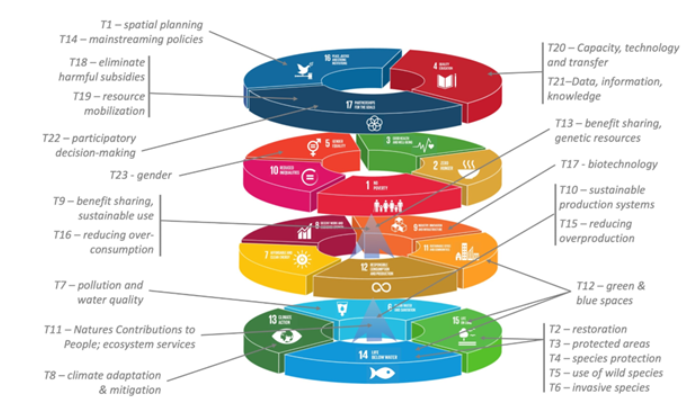
Kunming-Montreal Global Biodiversity Framework
India’s Progress:
- India has reported that 22% of its terrestrial area and 5% of marine and coastal areas are now included in the Protected Area Network as part of Target 3, known as the 30×30 initiative.
- Despite progress in expanding protected areas, concerns have emerged regarding legal definitions and potential diversions of these areas for non-conservation purposes in India.
- The Forest (Conservation) Amendment Act of 2023 in India broadened the definition of forest activities to encompass commercial ventures like zoos and ecotourism, signalling a commitment to sustainable development.
- However, the Supreme Court has mandated that any proposals for establishing zoos and safaris within forest areas (excluding protected areas) must first receive approval from the court.
- India has identified 14 categories of Other Effective Area-Based Conservation Measures (OECMs), which include citizen-led initiatives. However, questions have been raised about the legal protection of these measures due to their voluntary nature.
What Could be the Implication of Forest Expansion on India’s Indigenous Tribes?
- Implications:
- Forest Expansion under GBF targets may restrict traditional land use practices and livelihoods of indigenous communities relying on natural resources, leading to increased poverty and food insecurity among indigenous populations.
- Approximately 84% of India’s national parks were established in areas inhabited by indigenous peoples, and meeting the GBF targets may pose a threat to their existence and way of life.
- Related Recent Instances:
- Initiatives such as the proposed upgrade of the Kumbhalgarh Wildlife Sanctuary in Rajasthan to a tiger reserve could potentially displace 162 tribal villages.
- Expansion plans for the Nauradehi Sanctuary in Madhya Pradesh have the potential to impact 62 predominantly tribal villages.
- The notification for the establishment of the Barak Bhuban Wildlife Sanctuary in Assam raises concerns for indigenous groups such as the Khasis, Dimasas, and others, potentially affecting their livelihoods and cultural heritage.
How India can Utilise Indigenous Tribes in Biodiversity Conservation?
- Promoting Cultural Heritage Preservation through Ecotourism: Advocating for ecotourism initiatives led by indigenous communities to preserve cultural heritage while generating income.
- Exemplary Case: The Wayanad tribal heritage villages in Kerala serve as a prime example where community-driven eco-tourism projects have not only increased revenue but also safeguarded wildlife and empowered local populations.
- Integration of Traditional and Professional Knowledge: Utilising the traditional knowledge of indigenous tribes such as the Khasi and Jaintia tribes of Meghalaya, who have a deep-rooted tradition of preserving “sacred groves,“ areas of natural vegetation protected through local customs and sanctions.
- Integrating this wisdom with scientific surveys conducted by institutions like the Wildlife Institute of India (WII) can facilitate the development of comprehensive conservation strategies.
- Promotion of Co-Management Models: Advocating for the expansion of co-management models like the West Bengal Joint Forest Management (JFM) program, where indigenous communities collaborate with forest departments to oversee protected areas.
Way Forward:
- Upholding Free, Prior, and Informed Consent (FPIC): The Indian government should adhere to the mandatory requirement of FPIC before establishing protected areas on tribal lands under the Panchayats (Extension to Scheduled Areas) Act, 1996. This ensures that indigenous communities have a voice in decisions affecting their land and resources.
- Conducting Social Impact Assessments: It is essential to conduct thorough social impact assessments to understand the potential implications of expanding protected areas on existing livelihoods. This will help in identifying potential challenges and formulating appropriate mitigation measures.
- Implementing Co-Management Models: Drawing inspiration from Namibia’s Communal Conservancy program, India can establish co-management models for protected areas. These models empower indigenous communities by granting them a stake in wildlife management and incentivizing sustainable practices.
- Aligning Policies with International Standards: India should align its national policies with the principles outlined in the United Nations Declaration on the Rights of Indigenous Peoples (UNDRIP). This ensures that indigenous rights and knowledge systems are respected, while sincere conservation efforts are pursued in tandem.
Source :
Where to use :
Paper III (General Studies ) : Environment and Conventions
Paper I ( Geography Optional ) : Environmental Geography
Cloud Seeding
Cloud Seeding : Cloud seeding is a weather modification technique that involves the introduction of certain substances into clouds to encourage precipitation, typically in the form of rain or snow. There are two common seeding agents: Silver Iodide and Calcium Chloride .
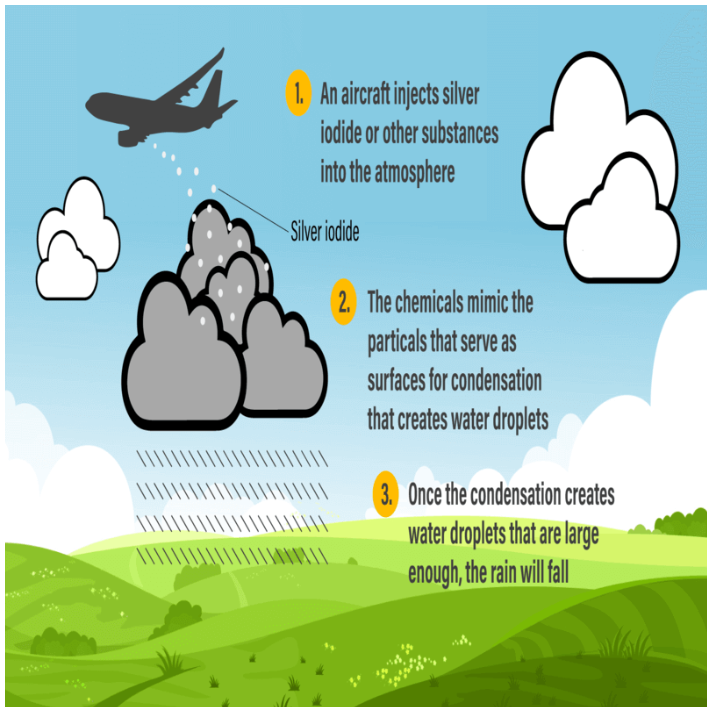
Geo Engineering
Geo Engineering : Geoengineering is also known as climate engineering. It is a conceptual method of reducing the negative effects of climate change by removing the carbon dioxide from the atmosphere or by limiting the amount of sunlight reaching the planet’s surface. Solar Radiation Management and Ocean Iron Fertilization are forms of geoengineering or climate engineering.
Solar Waste
Solar Waste : Solar waste refers to the waste generated during the manufacturing of solar modules and waste from the field (project lifetime). It includes scrap produced during production and waste from photovoltaic (PV) modules failing quality tests.
Negative leap second
Negative leap second: A negative leap second is a concept used in timekeeping to correct and synchronize atomic clocks with astronomical time, specifically Universal Time (UT), based on the Earth's rotation. Unlike a positive leap second, which adds an extra second to the clock to account for the slowing down of the Earth's rotation, a negative leap second would involve subtracting a second from the atomic clocks. This adjustment would be necessary if the Earth’s rotation speed were to increase, causing atomic time to lag behind astronomical time.
Magento Fossils
Magento Fossils: They are the fossilized remains of magnetotactic bacteria that contain magnetic minerals. The majority of giant magneto fossils have been discovered in sediment layers corresponding to two specific geological epochs: the Paleocene-Eocene These periods are notable for experiencing significant increases in global temperatures. It suggested that the magnetofossils formed only during periods of extreme warming..
DUBAI FLOODS IN 2024
- In the regions of Arabian Peninsula, deserts lie adjacent to warm oceans, the prevalent conditions typically involve significant evaporation due to the proximity to vast water bodies. However, this moisture is often trapped under layers of sinking air, akin to a cauldron sealed tightly with a lid. This atmospheric configuration stabilizes the environment, preventing the ascent of warm, moist air and thereby inhibiting cloud formation and precipitation.
- A remarkable shift in this dynamic occurred , when an unusual meteorological event led to substantial precipitation in desert areas, demonstrating the complex interplay of atmospheric phenomena. A high-altitude jet stream, which typically remains further north, veered unusually far south. This deviation was a result of the merging of the subtropical jet and the polar jet, two major air currents in the upper atmosphere.
- This shift effectively removed the "lid" that had been keeping the humidity from rising, allowing the accumulated moisture to move upwards freely. Concurrently, a robust influx of moisture-laden air from the northern tropical Indian Ocean began to converge over the desert. The dew point temperatures in the United Arab Emirates reached levels typically seen in the humid rainforests of the Congo basin, an indicator of the exceptionally high moisture content in the air.
- This event serves as a powerful example of how shifts in jet streams and the introduction of cooler air masses can dramatically alter weather patterns in regions typically characterized by arid conditions.
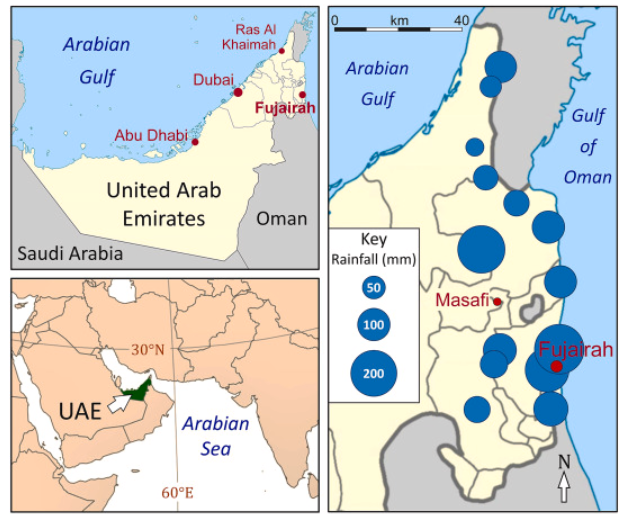
Source :
Where to use :
Paper II ( Geography ) : Climatology
Paper I ( General Studies ) : Disaster Management
Places in the news
1. Katchatheevu
Why in news : Tiny Sri Lankan island sparks political row in India
- The island is located between Neduntheevu, Sri Lanka and Rameswaram, India and has been traditionally used by both Sri Lankan Tamil and Tamil Nadu fishermen.
- Though the Indian government never controlled it, the island remained disputed until 1974 between India and Sri Lanka when India recognised Sri Lanka's sovereignty over the island.
- Approx . Jaffna Peninsula
2. Vasundhara Tal
Why in news : This glacial lakes in Uttarakhand is considered among vulnerable to outburst.
- It is a large glacial lake at the base of Mount Kamet in the Garhwal Himalayas, at an elevation of 4,795 meters
- The melt water in Vasundhara Tal forms source of the drainage for Raikana river, in the NE part of Chamoli district, Uttarakhand.
- Approx. Chamoli
3. Kumittipathi
Why in news : People of Kumittipathi want, vandalised 2,000-yr-old Pathimalai cave paintings restored
- Kumittipathi is situated in the Palakkad Gap of the Western Ghats, a notable break in the mountain range.
- This geographical feature has historically served as a corridor connecting Tamil Nadu and Kerala.
- According to the archaeologists, the Kumittipathi Rock Paintings were created by tribal people for entertainment.
- Approx : Palakkad Gap
4. Shinku La Pass
Why in news : Member of Parliament from Ladakh, Jamyang Tsering Namgyal, announced that work on the strategically vital Shinku La Tunnel is set to commence in June this year.
- Shinku La Pass, also known as Shingo La, is a mountain pass in India that connects the Lahaul region of Himachal Pradesh with the Zanskar region of Ladakh.
- A road connecting Darcha with Padum across the Shingo La pass was first conceived in after the Kargil conflict of 1999.
- Approx : Rohtang
5. Jalpaiguri
Why in news : Recently, a deadly tornado struck Mainaguri in Jalpaiguri district, West Bengal, killing five and injuring over a hundred, highlighting the increasing frequency of tornadoes in India.
- Jalpaiguri is a city in the Indian state of West Bengal.
- The city is located on the banks of the Teesta River which is the second largest river in West Bengal after the Ganges, on the foothills of the Himalayas.
- The Karla river is another major river of Jalpaiguri which flows through the city.
- Approx : Darjeeling hills
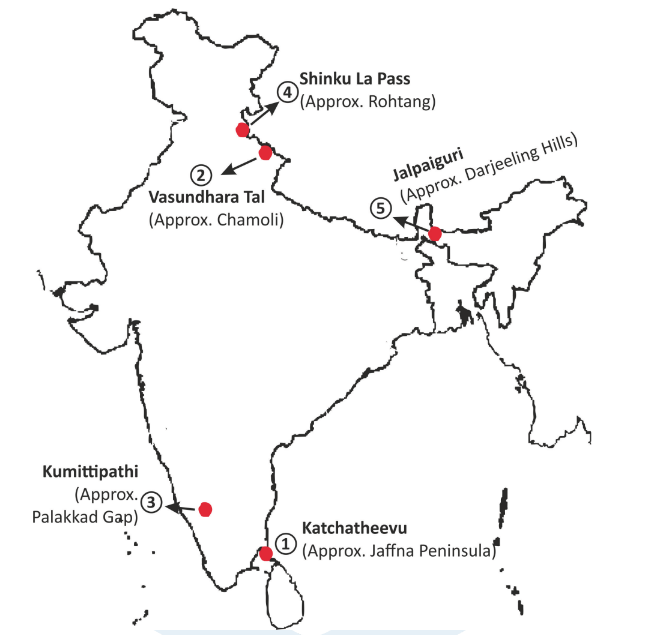
Fortnightly KOSMOS MCQs Practice
Q1. Consider the following statements regarding Plastic Waste Management (Amendment) Rules, 2024.
- Biodegradable plastics are described as materials capable of decomposing through biological processes in specific environments like soil and landfills, and do so without yielding microplastics.
- The regulations delineate the chemical assays necessary to confirm the non-existence of microplastics or to ascertain the necessary reduction levels of microplastics for their complete elimination.
Which of the statements given above is/are correct?
- Only 1
- Only 2
- Both 1 and 2
- Neither 1 nor 2
Q2. Consider the following statements:
Statement-I: The Krishi Integrated Command and Control Centre (ICCC) provides insights into crop yields, production levels, drought conditions, cropping trends, anomalies, and Key Performance Indicators (KPIs).
Statement-II: The ICCC facilitates the visualization of GIS-based soil carbon maps and soil health card data, thereby assisting in the creation of tailored advisories for farmers.
Which one of the following is correct in respect of the above statements?
- Both Statement-I and Statement-II are correct, and Statement-II is the correct explanation for Statement-I.
- Both Statement-I and Statement-II are correct, and Statement-II is not the correct explanation for Statement-I.
- Statement-I is correct, but Statement-II is incorrect.
- Statement-I is incorrect, but Statement-II is correct.
Q3. Consider the following statements:
- Gulaal Gota is a compact sphere crafted from lac and encased with dry gulaal, with a total weight of approximately 20 grams when filled.
- Lac, the fundamental component used in making Gulaal Gota, is exclusively procured from Tamil Nadu and Karnataka.
Which of the statements given above is/are correct?
- Only 1
- Only 2
- Both 1 and 2
- Neither 1 nor 2
Q4. Consider the following statements:
- Deep-sea mining entails the retrieval of precious mineral resources from the seabed, at depths spanning 200 to 6,500 meters beneath the ocean's surface.
- A baseline is typically a line established along the coastline that acts as a reference for determining the external limits of a state's territorial sea and additional maritime areas, including its exclusive economic zone.
Which of the statements given above is/are correct?
- Only 1
- Only 2
- Both 1 and 2
- Neither 1 nor 2
Q5. Consider the following statements regarding the Environment Protection Charge (EPC):
- This fund is utilized by the Central Board of Pollution Control (CPCB) to furnish scientific insights aimed at enhancing air quality within the Delhi NCR region.
- It was established following a directive from the Supreme Court in the M.C. Mehta Vs Union of India Case, 1985.
Which of the statements given above is/are not correct?
- Only 1
- Only 2
- Both 1 and 2
- Neither 1 nor 2
Q6. With reference to Rifting, consider the following statements:
- Rifting describes the geological phenomenon in which the Earth's lithosphere is extended and attenuated, resulting in the creation of rift valleys or basins.
- This process occurs at divergent plate boundaries where, as plates diverge, tensional forces lead to the fracturing and separation of the lithosphere, forming rift zones.
Which of the statements given above is/are correct?
- Only 1
- Only 2
- Both 1 and 2
- Neither 1 nor 2
Q7. With reference to the Kunming-Montreal Global Biodiversity Framework (KMGBF), consider the following statements:
- KMGBF emerged from the 15th Conference of Parties (COP15) under the United Nations Framework Convention on Climate Change (UNFCCC).
- Its objective is to expand protected regions to cover at least 50% of the world's land area by 2030.
Which of the statements given above is/are correct?
- Only 1
- Only 2
- Both 1 and 2
- Neither 1 nor 2
Q8. Consider the following statement regarding South China Sea:
- The South China Sea is surrounded by China and Taiwan in the north, the Indo-Chinese peninsula on the west, Indonesia and Brunei to the south, and the Philippines to the east.
- More than 70% of India's trade traverses through the South China Sea and the Malacca Strait.
Which of the statements given above is/are correct?
- Only 1
- Only 2
- Both 1 and 2
- Neither 1 nor 2
Q9. ‘Kallakkadal’ sometimes seen in the news, is :
- Tribal communities
- Group of corals islands
- Coastal flooding phenomenon
- Trio of mountains
Q10. Consider the following statements:
Statement-I: Callisto ranks as one of Jupiter’s largest moons and is the third-largest moon in the Solar System, following Ganymede (Jupiter) and Titan (Saturn).
Statement-II: As per NASA, after Saturn, Mars boasts of the highest number of moons in the Solar System.
Which one of the following is correct in respect of the above statements?
- Both Statement-I and Statement-II are correct, and Statement-II is the correct explanation for Statement-I.
- Both Statement-I and Statement-II are correct, and Statement-II is not the correct explanation for Statement-I.
- Statement-I is correct, but Statement-II is incorrect.
- Statement-I is incorrect, but Statement-II is correct.
Share the article
Edukemy’s Current Affairs Quiz is published with multiple choice questions for UPSC exams
MCQ
Get Latest Updates on Offers, Event dates, and free Mentorship sessions.

Get in touch with our Expert Academic Counsellors 👋
FAQs
Geography Current Affairs focuses on the contemporary issues, events, and developments in the field of geography. It covers recent geographical phenomena, environmental changes, geopolitical shifts, and related news. This differs from regular geography studies which may focus more on foundational concepts, historical contexts, and theoretical frameworks.
Updates are provided regularly to ensure that subscribers stay informed about the latest developments in geography. Typically, updates are provided on a fortnightly basis, depending on the frequency of significant events and changes in the field.
Absolutely. Geography Current Affairs serves as a valuable resource not only for Geography optional but also for GS papers, especially GS Paper 1 (covering Indian Heritage and Culture, History, and Geography of the World and Society) and GS Paper 3 (covering Technology, Economic Development, Biodiversity, Environment, Security, and Disaster Management). It aids in building a holistic understanding of various topics and strengthens answer-writing skills by incorporating contemporary examples and perspectives.
Geography Current Affairs holds immense importance for UPSC preparation, particularly for aspirants opting for Geography optional. It helps candidates stay updated with the latest developments, geographical phenomena, environmental issues, and geopolitical shifts worldwide, aligning them with the dynamic nature of the subject as tested in the UPSC examinations.

